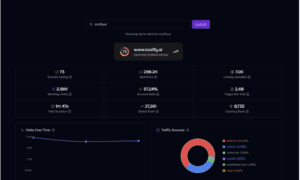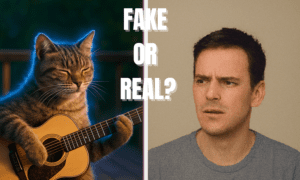From AI deepfakes to employee leaks, the crisis playbook has changed. This PR strategist explains how to fight back and win.
“A single tweet/TikTok can trigger disaster in under 60 minutes. So, how do you protect your brand before the internet comes for you?”
That’s the question we’re putting to Jeremiah Musa, a battle-tested PR strategist who’s helped brands navigate everything from AI deepfake scandals to viral cancel culture meltdowns. In this no-holds-barred interview, we dig into the dark arts of modern reputation management, where speed, authenticity, and preemptive strikes can make all the difference.
Q1: Jeremiah, you’ve said brands are “fighting misinformation with one hand tied behind their backs.” What’s the first move when a lie about your client starts trending?
Jeremiah: “You don’t just ‘debunk’, you drown it out. I had a client accused of using child labor because of a doctored photo. Instead of saying ‘That’s not our factory!’ (which just spreads the lie), we flooded Instagram with 50+ employee selfies from their actual facilities, geotagged in real-time. Within hours, the hashtag #MeetOurTeam was trending above the scandal. Fight fiction with overwhelming truth.”
Q2: Gen Z cancels brands faster than you can say ‘apology statement.’ How do you advise clients to respond when they’ve legitimately messed up?
Jeremiah: “Stop apologizing to the internet; apologize to the people you hurt. When a food delivery app I worked with overcharged low-income neighborhoods, we didn’t post a corporate ‘we’ll do better’ note. The CEO went to those neighborhoods, handed out free meals, and said, ‘We screwed up. Here’s exactly how we’re fixing it.’ Then we let local activists audit our pricing algorithm. Painful? Yes. But sales bounced back in 8 weeks because trust was rebuilt where it was broken.”
Q3: Leaks from employees are now a top PR risk. How do you turn staff from liabilities into allies?
Jeremiah: “Pay them to talk. Seriously. One tech client was bleeding from Glassdoor leaks, so we created an ‘Ambassador Program’ where employees got bonuses for posting unfiltered ‘Day in the Life’ content. No PR polish, just them ranting about cafeteria food or praising flexible PTO. Suddenly, whistleblowers looked like outliers instead of heroes. Transparency isn’t about control; it’s about credibility.”
Q4: AI deepfakes are the PR nightmare we never saw coming. Any playbook for when a fake CEO video surfaces?
Jeremiah: “Act faster than the algorithm. We pre-recorded our client’s CEO saying, ‘If you see me endorsing a crypto scheme, it’s fake: here’s how to tell.’ When the deepfake hit, we pushed that video to every platform with the caption: ‘SCAM ALERT: This isn’t our CEO. Here’s his real voice.’ We even got TikTok creators to duet it. The fake died in 48 hours. Lesson? Pre-bunk your own crisis.”
Q5: You’ve claimed ‘neutrality is the riskiest PR strategy.’ But how do brands pick which social issues to champion without alienating customers?
Jeremiah: “Start with your product, not politics. A shoe company I advised didn’t jump on BLM or climate marches; they focused on foot health in underserved schools. That was their lane. They donated 10K pairs of shoes, then had kids design the next sneaker line. No divisive hashtags, just undeniable impact. Pick battles where your product is the solution, and you’ll never look performative.”
Q6: Finally, give us one tactic every brand should steal from your playbook today.
Jeremiah: “Run monthly ‘Stress Tests.’ Assemble your team and ask: ‘If we went viral tomorrow for the worst possible reason, what would it be?’ Then leak it yourself. A restaurant client ‘accidentally’ posted a fake negative Google review claiming rats in the kitchen—then live-streamed their exterminator tour. They turned their biggest fear into a trust-building stunt. Control the narrative before it controls you.”
“Here’s the hard truth: In 2025, your reputation isn’t managed, it’s either reinforced or relinquished. The choice is yours.”



































